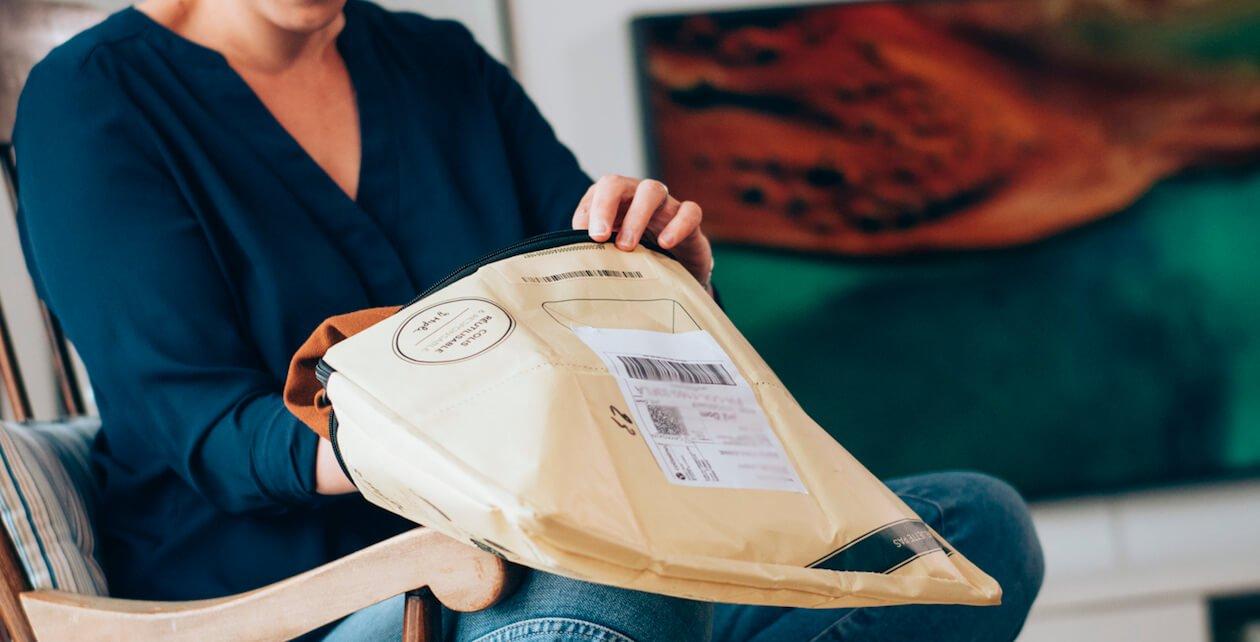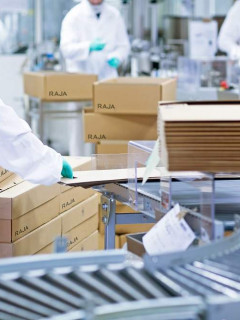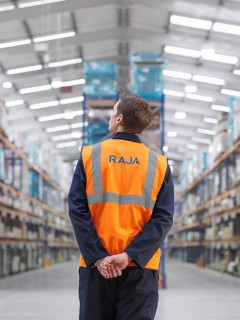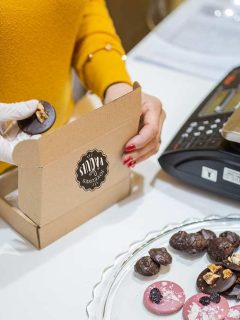It’s undeniable: today’s era marks the end of single packaging. If you’ve read our interview with Fabrice Peltier, designer and eco-design consultant, you’ll know that a new era is beginning: that of reusable packaging
And some brands have understood this, and are committed to helping companies deploy more eco-responsible packaging strategies

This is the case of the Hipli brand, of which we interviewed one of the two co-founders: Anne-Sophie Raoult. Find out more about the Hipli concept, and how it can help you move towards more responsible e-commerce logistics.

Anne-Sophie, can you tell us about your background?
I originally came from the world of purchasing. When I met Léa Got, my co-founder of Hipli, I was working as a buyer for a large brewer. I was working from a co-working space in Le Havre: that’s where Léa and I met
During informal discussions in the autumn of 2019, Léa shared with me an observation that resonated with me: how many of the purchases we make on the Internet arrive at home in packaging that is far too large, or are so over-packaged that we end up throwing them in the bin?
The theme was more than ever a trend in the media, and Léa and I wanted to explore the subject, by taking action on this environmental issue.
So it was the environmental emergency that motivated you to create Hipli?
Yes, the environmental aspect was predominant. We can see it today: the trend is towards reusable packaging. Many companies want to minimise their environmental impact: for example, we see many requests to ship shoes without shoe boxes, or for minimalist cushioning solutions.
But we also wanted tohave a social impact locally. My roots are in Le Havre, and Léa and I wanted to participate in the dynamism of this city, to create local jobs. In the end, Hipli is a whole local ecosystem.
That’s where the name Hipli comes from: the H stands for the city of Le Havre, and “ipli” reads “e-pli”: Hipli is therefore the e-merchant fold made in Le Havre!

Can you tell us about the Hipli parcel concept?
Hipli is a reusable parcel service for e-retailers. The principle is simple: we have created packaging that can be used up to 100 times to ship products. The e-retailer therefore buys a reusable parcel and can offer it as an e-commerce delivery option on his website
Individuals who choose this option receive their order in this packaging, and can either send it back to the brand in the event of a product return, or send it back to us by post in a pre-stamped pouch
All they have to do is fold the package, put it in the return pouch, and send it to Le Havre so that we can clean it… before it is used for another shipment!
Are your parcels usable by all e-tailers?
Originally, we started designing Hipli parcels for the textile sector: a fairly simple sector in terms of packaging, since the need for protection is less, and the processes are fairly standardised. Hipli parcels were then flexible, and did not protect against shocks.
However, seeing the appeal of our service, we soon launched a more rigid box, which can be used to pack other types of products. We now have 6 different reusable packs in our Hipli range, which can be used for larger products and can incorporate neutral cushioning for extra protection.
How do you ensure that your packages are reusable up to 100 times?
 First of all, we did laboratory tests on our first prototypes to make sure that the 100-use life span was realistic
First of all, we did laboratory tests on our first prototypes to make sure that the 100-use life span was realistic
There are two things that ensure that Hipli packs will last that long
- The material of the packs. they are made of non-woven polypropylene, with a polypropylene lamination. it is this lamination that makes the pack able to withstand the sticking and peeling of labels on it. we had tested other materials, such as biomaterials or rPET packaging, but none of them were as resistant to label peeling
- The packages are sewntogether, which makes them easy to repair in our “package hospital”: this is where we “look after” our products, so that they return to the e-tailers without a hitch
And so far, Hipli parcels have managed to withstand several shipments: very few of them come back to our “hospital” to be repaired!
How do Hipli parcels enhance the customer experience that e-tailers offer their targets?
The customer experience offered by our products is important to us, which is why we co-designed them with e-commerce brands from the start: after all, they were the ones who knew best what kind of experience they wanted to offer their customers!
This co-design allowed us to create reusable packages that are truly tailored to the customer experience. For example:
- The parcels are closed with a zip, rather than a velcro fas tener which could damage textile products when unpacked
- The colour of the parcels has also been chosen in accordance with the e-retailers: it is a neutral colour, which avoids “competing” too much with the branding of the brands that use them
- The folding of the parcels themselves takes care of the customer experience: they are designed to fit into a standard letterbox, to facilitate the return of customers, who just have to slip it into the slot of any letterbox!
Ultimately, it is this co-creation that allows e-tailers to make the best use of our products as well, and it is from them that the idea of putting the opening of the parcel on the widest slice, to facilitate and accelerate the preparation of the parcel, comes.

We also take a lot of feedback from end customers to ensure an optimal customer experience. For example, the zip fastener seemed to cause anxiety to many customers in the early days: they didn’t want their parcels to be opened during shipping. That’s why we decided to add a clamp fastening system, which is threaded onto eyelets, making the parcels tamper-proof
Finally, we do not hesitate to do A/B testing to discover the best practices to apply to our products. For example, we tested different wordings on the packaging to find out which ones made people want to send the Hipli package back: should it say “Be careful to send your package back!” or “Bravo: now it’s your turn to send the package back”?
When describing the Hipli service, you talk about “Packaging As A Service”, can you explain what this is?
Packaging As A Service was a very natural choice for us. Hipli invests in creating its own packaging, and then hasa fleet of parcels to make available to e-retailers. So we give these e-retailers a use for a cost; and the price of the Hipli parcels includes the postal return and repackaging costs.
We didn’t want to become a deposit system: we wanted the circulation of parcels to be as free as possible, so as not to weigh down the shopping experience with a deposit, which still frightens many consumers
Our parcels are charged at around €2 to our customers, and we recommend that e-tailers do not charge the end customer more than €1, so as not to slow down the purchase
Finally, to make the system more attractive to individuals, we have launched a benefits programme. The principle is simple: Hipli parcels have a barcode, which the end customer can enter on the Hipli website to benefit from benefits and promotional codes from our partner brands. This reward system motivates consumers to return their products: a real virtuous circle for everyone.
How do you distribute your reusable packages?
Until now we have been distributing them directly via our website, but we have just launched a partnership with RAJA, which now also distributes Hipli parcels
The idea was to offer an opportunity to e-retailers who need other types of packaging (for larger or more fragile products, for example). Since we don’t have the ambition to have a whole catalogue of packaging solutions, we wanted to partner with RAJA, which can offer other solutions, adapted to the needs of customers that we don’t fill.

What is in store for Hipli in the months and years to come?
Our objective is to become the standard for parcels, the parcel of tomorrow. But our next challenge, in the next six months, is to work on and expand the range of parcels. That said, if we want to offer more parcel formats, we want to go step by step: the idea is not to create more waste with parcels that will not be used, but to continue to create packaging that responds to real needs, identified upstream with e-retailers
Thanks to Anne-Sophie for her time and enthusiasm!














